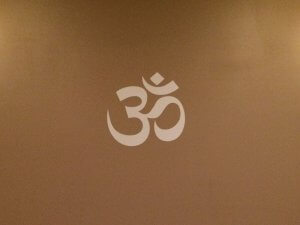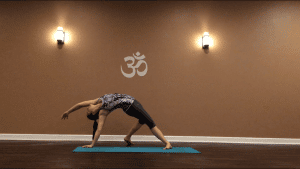Written by: Andy Vantrease
When I first started practicing yoga, I told myself that it was to ease back into exercise after a long battle with tendonitis and overworked muscles. As I stepped onto my mat those first few weeks, I didn’t know much about the philosophy or importance of setting an intention, and I assumed it meant to set a goal. We’re all accustomed to setting goals in life – work, financial savings, #relationshipgoals – so I figured a yoga intention was the same.
When setting my intentions, I typically only took into account the physical play that would take place on my mat. With prayer hands over my heart, I would think to myself, be more flexible in forward fold, or make your heels touch the mat in downward dog. These thoughts narrowed the focus of my practice and didn’t include any of the emotional and mental changes that I would face in the next hour, let alone off the mat after class.
By focusing solely on the physical, I was limiting growth in other areas. One day, as I was asking my physical therapist (who also happens to be a yoga enthusiast) about my shoulder pain during yoga, she said, “Make sure you are opening your heart.” I waited for more, assuming she was going to tell me certain heart-opening poses to attempt. Instead she said, “Open your heart and surrender to what is.”
I began to realize that coming to my mat was not all about which poses to try and what exactly I should be doing with my wrists and hips and where to put my leg to get the perfect calf stretch. I started to let my body move with my breath and my inner feelings. For the next few classes, my intention was to feel. I wanted to feel everything that surfaced – every emotion, every fatigued muscle, every irritation, every elation, every confusion, everything. And, I wanted to meet those feelings with acceptance, as observations. I discovered that my true intentions were not physical growth at all, and that the positive changes I was seeing on the mat, within myself, had the power to follow me off the mat into the rest of my life.
Since yoga is a mind-body connection, setting an intention can bring your practice to a deeper level. By setting an intention you are making a connection between what you work through on your mat, and what you continue to focus on as you step off your mat and resume your daily schedule. Examples can be love, trust, patience, forgiveness, openness and positivity.
Try reflecting on these categories of thought to help you set an intention:
1) Practice gratitude: Thank yourself for showing up and setting this time aside to nourish your mind and body. Also think about the people in your life that allow you to be here and to be you every day. Practicing gratitude on and off your mat will help you to be more comfortable with what you have and allow you to open your heart to new situations, possibilities, and poses.
2) Ask Why: We all have reasons why we come to our mats; otherwise, we wouldn’t be there. Take a moment to really think about what you want to get out of your practice (and out of life) and envision yourself already working on the change you wish to see.
3) Think in Scales: For me, it’s helpful to think of my yoga practice as a microcosm for the bigger picture, for life itself. What I want to achieve, work through, challenge on my mat always translates to virtues I want to carry with me when I walk out the studio door. Recognize aspects of yourself or your life that you want to work on then bring them into your practice to make this connection.
4) Dedicate Your Energy: Sometimes used in conjunction with an intention, you can also dedicate your practice to someone or something that is in need of your love and energy. This allows you to pour your positivity and strength into something other than yourself, if that helps. (Remember, though, it is OK if you are showing up for yourself and your practice should be a safe place to focus on you.)
Intentions will continually change as you move through your practice. What you need one day, you may not need the next. Learning to move through these ebbs and flows in your asana practice will equip you with the strength and flexibility to deal with the constant changes you face in your everyday life. Rest assured that by taking this time, and setting this intention, you are doing something positive for yourself and for those around you.

